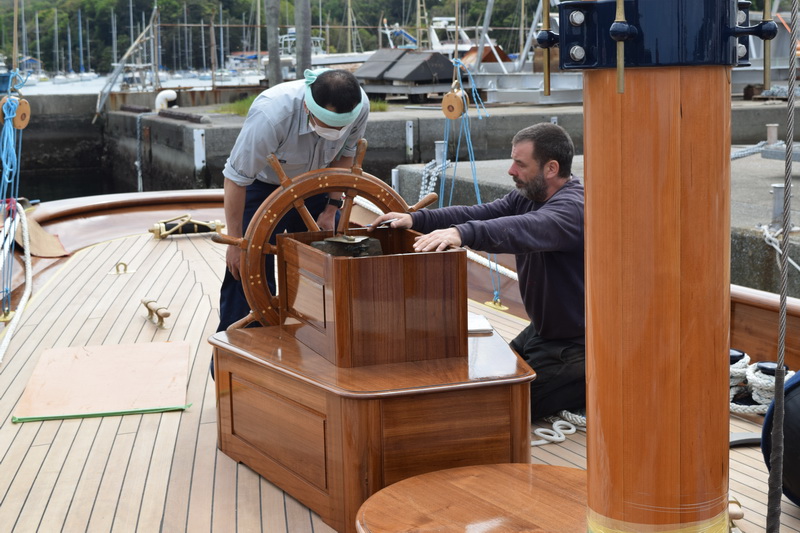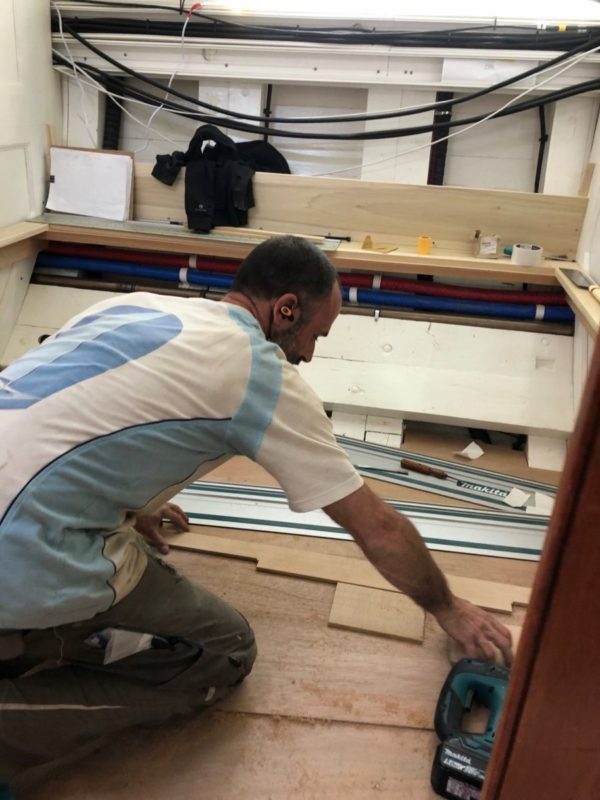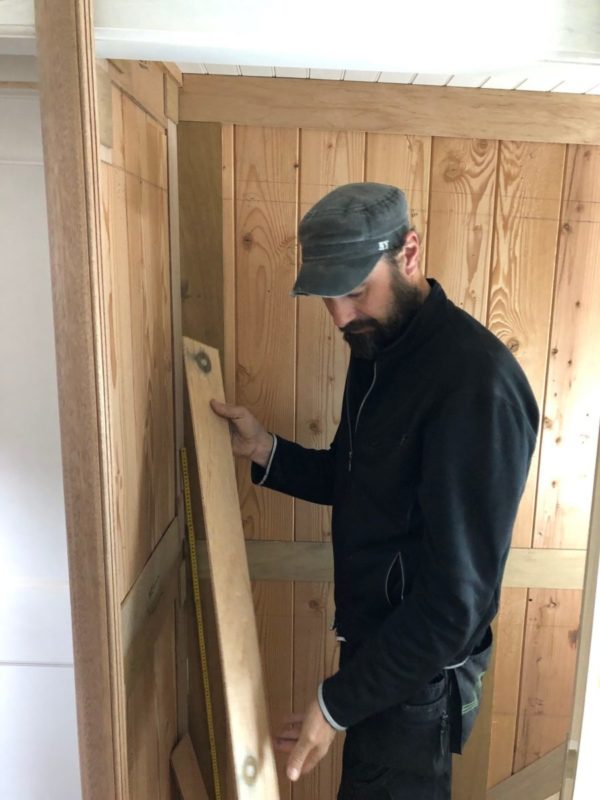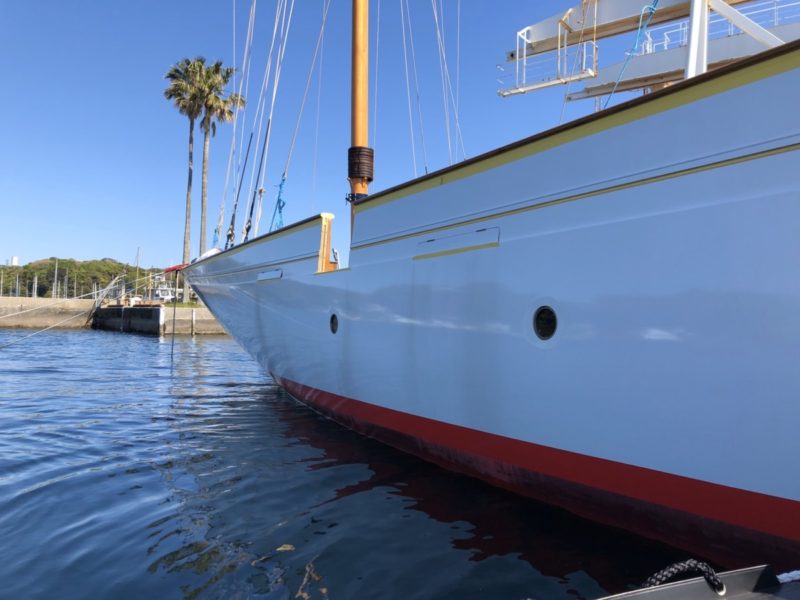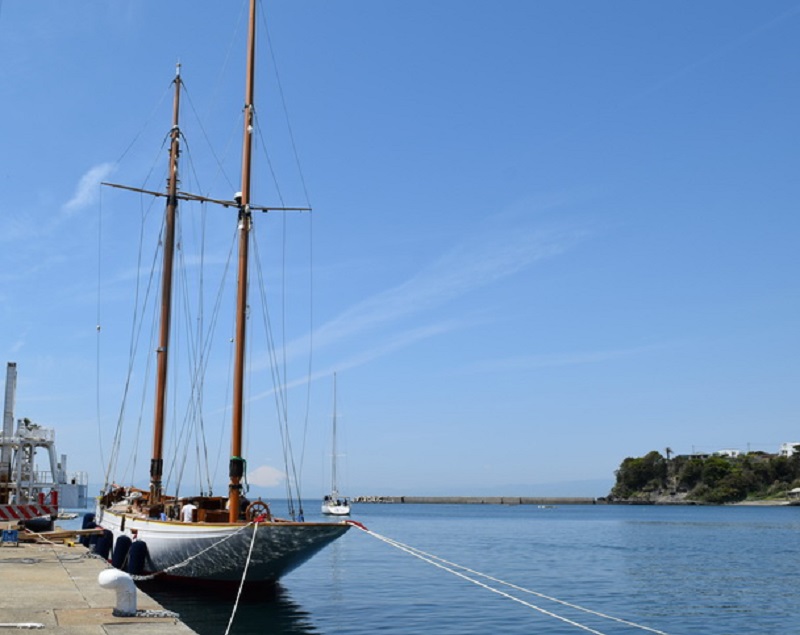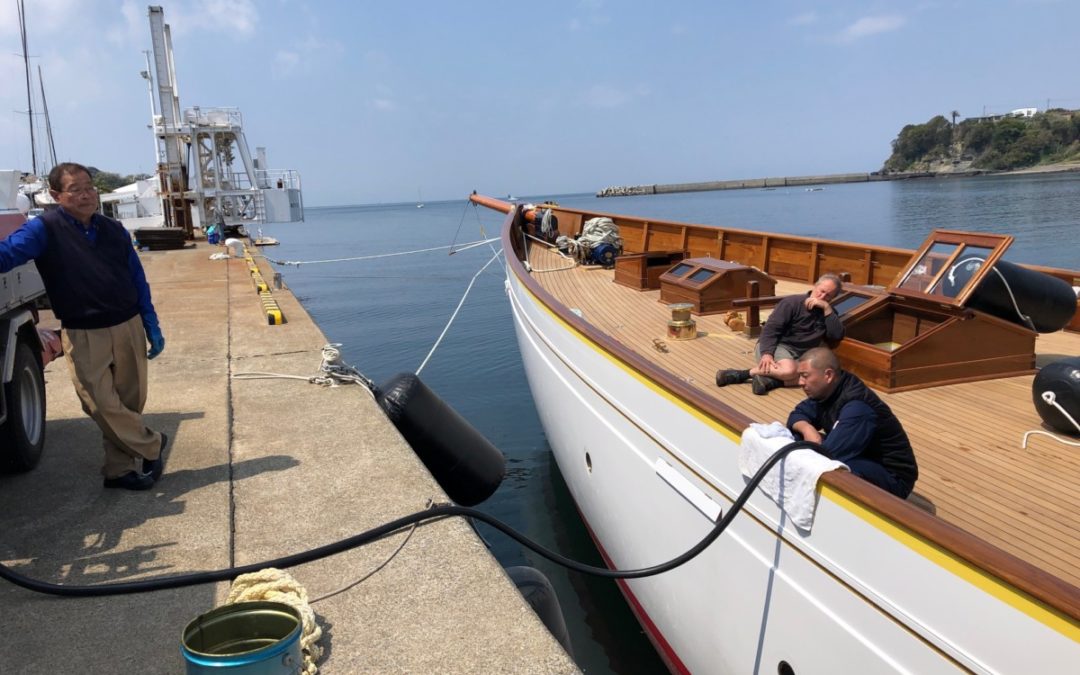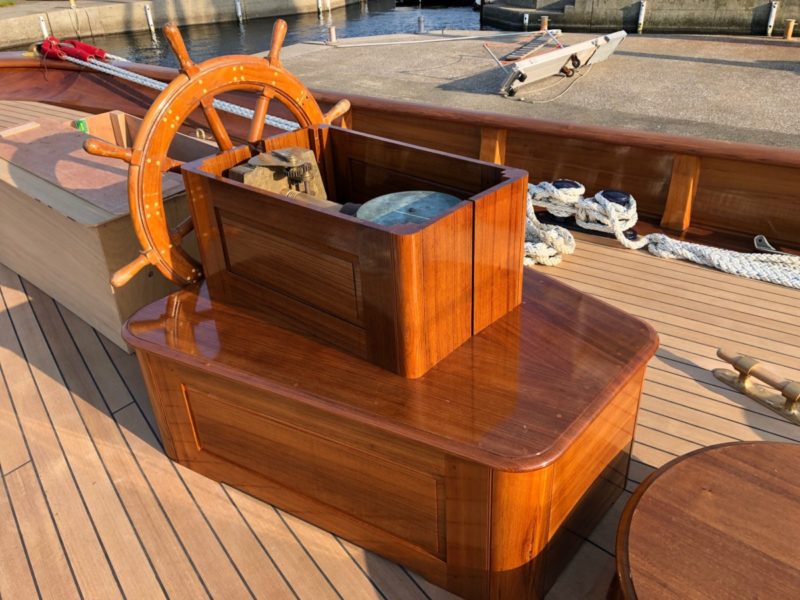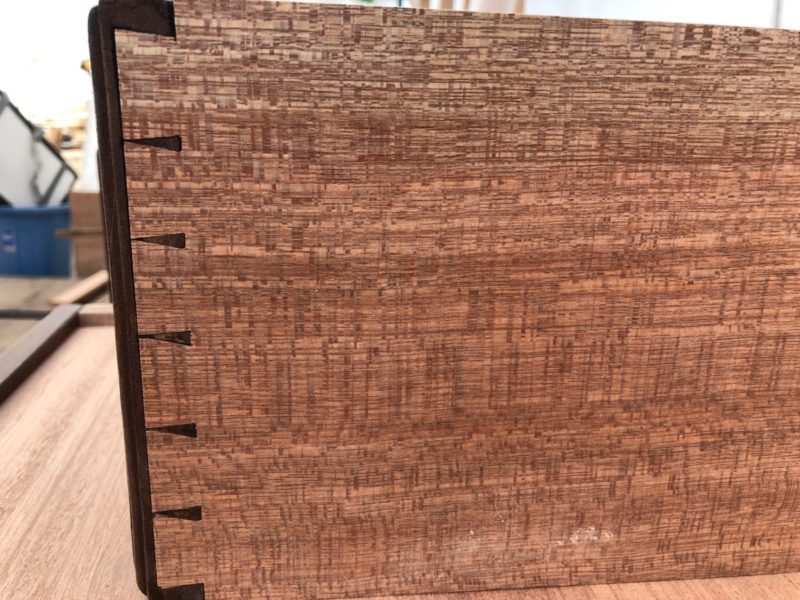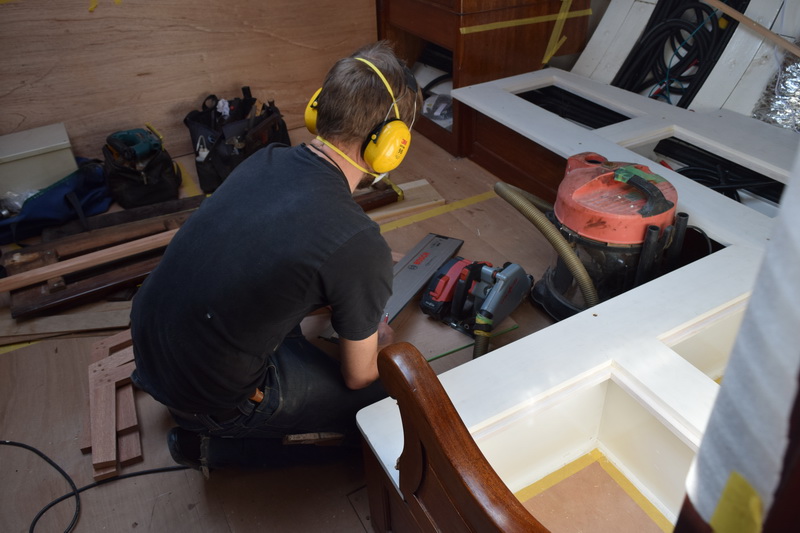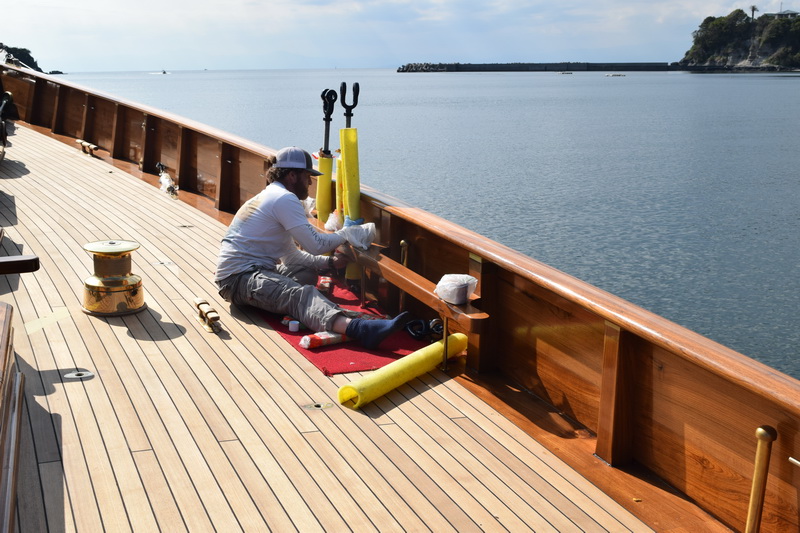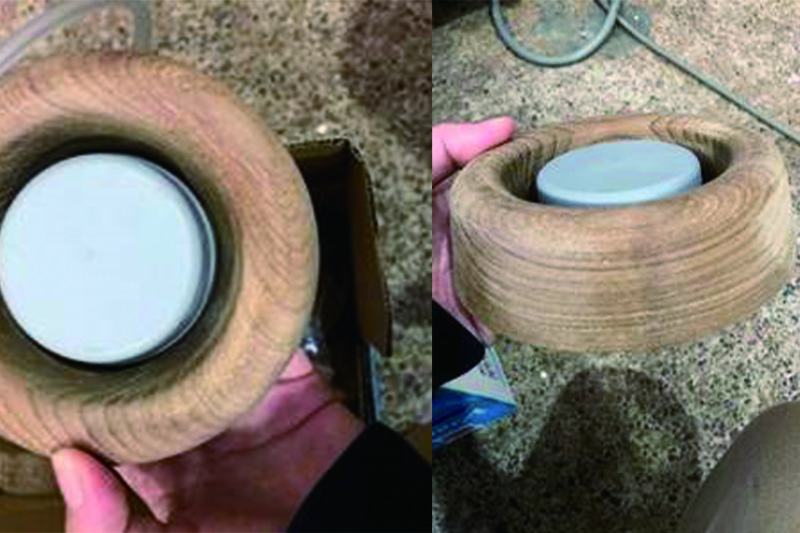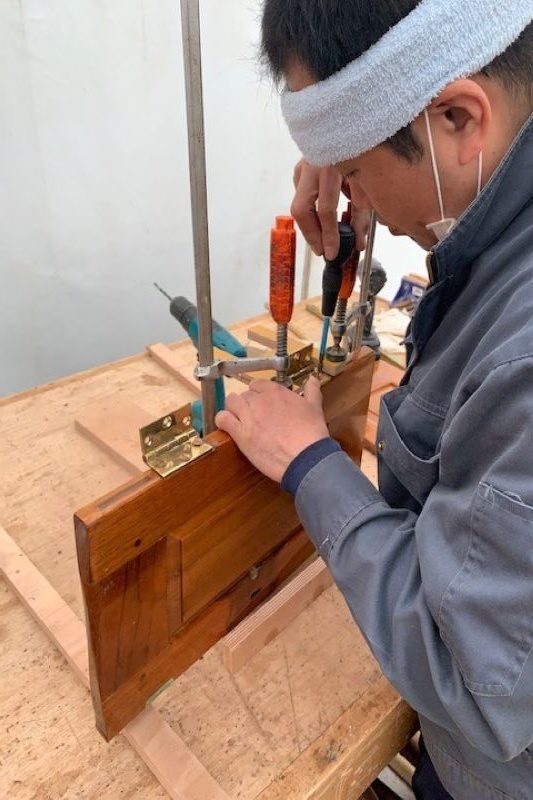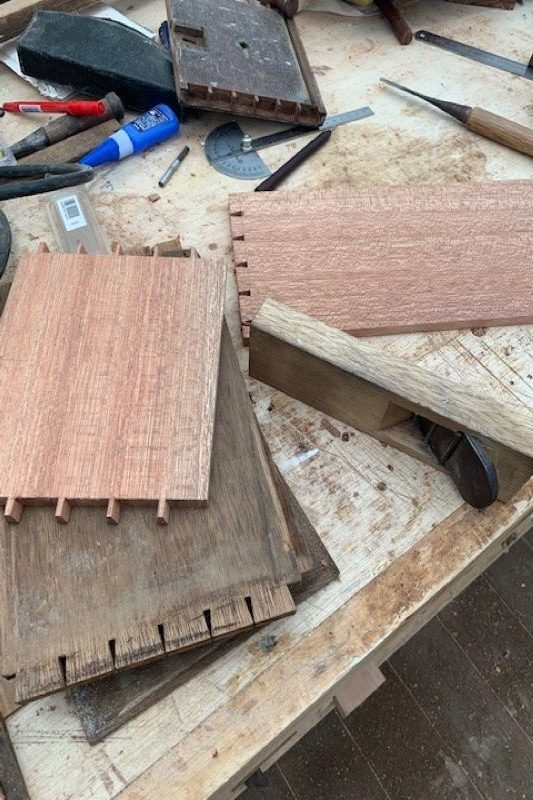
Blog — Friday , 1 May, 2020
Bill and Lewis are in the tent, repairing interior fittings. Bill is building a new locker interior for the owner’s stateroom;

Lewis is cleaning up the captain’s bunk frame.

The mizzen mast boom which was installed yesterday has now been finely adjusted, and Chuck has scheduled the attachment of the mizzen mast gaff for early next week.

Unfortunately it was raining today, but work in the tent on the interior furniture was going smoothly.
The parts in the photo are in good condition. But to match the rest of the interior, each part has to be completely stripped, cleaned, and given several coats of shellac to seal them and keep them clean. It is time consuming work.
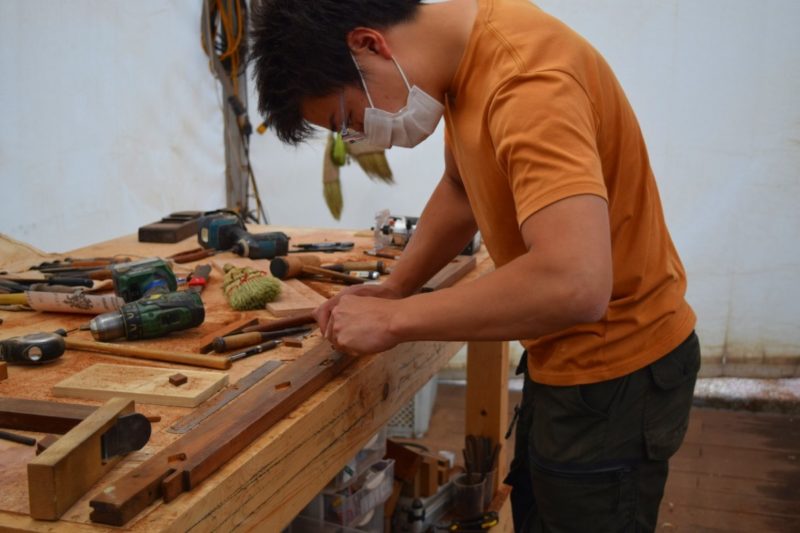
Tatsumi is working on the restoration of a bunk. We are making repairs and new furniture in Honduras mahogany as it’s the best match for the original parts. The visible parts of the bunks, desk drawers are made of high quality mahogany. The hidden carcasses, drawer runners, and structural framing is made of meranti, from the Phillipines. Poplar is used for the painted framework and bulkheads, and Douglas fir is used for the tongue and groove paneling.
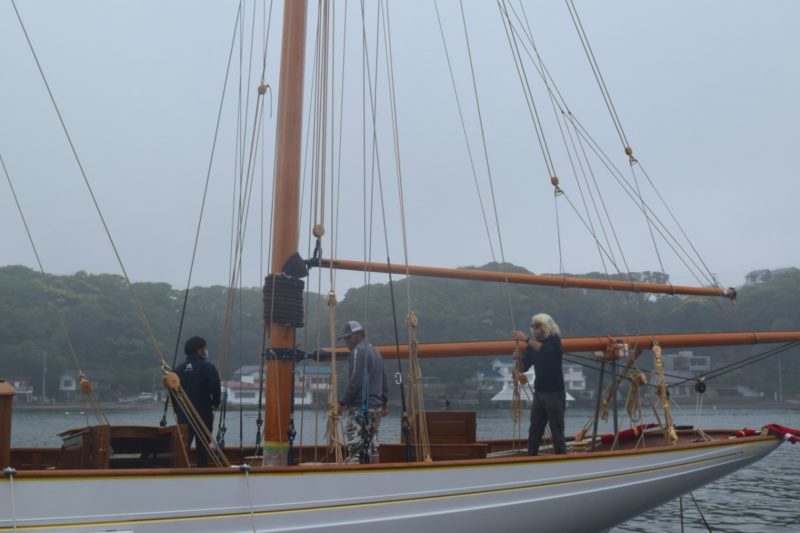
Chuck and Nat have just installed the horizontal spar called the mizzen gaff in a light rain. Unlike the mizzen boom which stays in its lower location, the mizzen gaff goes up and down as the sail is raised and lowered.


Hashimoto is in the process of restoring the top of the chart table. The new mahogany used for repairing the edge has a lighter color, but the repair can be disguised to look like the original parts.











